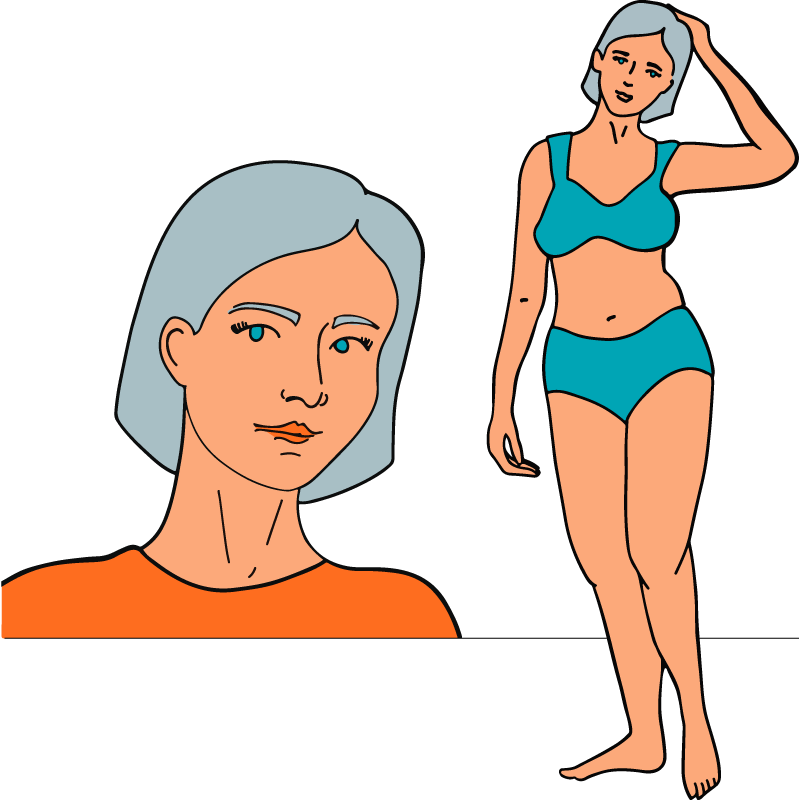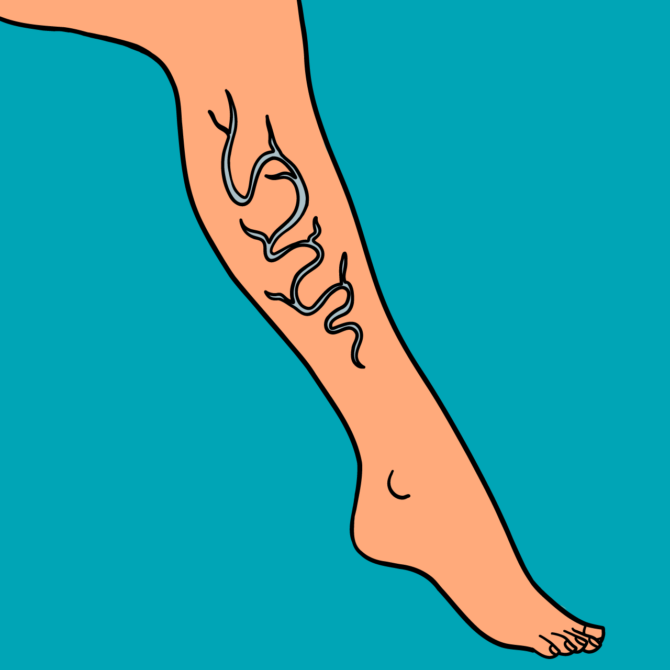How to get rid of prominent veins without surgery?
There are a range of options available for reducing the appearance of prominent veins without surgery, as well as completely removing them should that be your favoured approach:
1. Compression stockings: These specialised garments are designed to improve blood circulation by providing pressure to the legs without the need for any sort of invasive treatment. It is a method best used to reduce the appearance of mildly prominent veins.
2. Sclerotherapy: This minimally invasive procedure involves injecting a solution into the prominent vein, which causes it to collapse and then fade over time. It is a common and popular treatment for spider veins.
3. Laser therapy: Targeted laser energy can be used to target spider veins and smaller varicose veins on the face and body. It involves a laser that emits a specific wavelength of light that targets hemoglobin, the pigment in red blood cells that gives blood its red color. When the laser energy is absorbed by hemoglobin, it heats up causing damage to the blood vessel walls, leading them to collapse, close and eventually be absorbed by the body.
4. IPL: Intense pulsed light (IPL) is effective on thread veins, as the light energy is also attracted to haemoglobin, breaking up the pigment so that the body can disperse it.
5. EVLA: For larger varicose veins, treatments like endovenous laser ablation may be appropriate. EVLA is performed by inserting a thin laser fibre into the affected vein, before laser energy is delivered that heats the vein wall, causing it to collapse and seal shut. This reroutes blood to healthier veins, so the vein can be absorbed.
6. Radiofrequency Ablation: In a similar way to EVLA, radiofrequency ablation uses radiofrequency energy, delivered through a catheter, to close off prominent varicose veins.
How much does vein removal cost?
The cost of vein removal depends on the approach you decide to take and the severity of your condition. You’ll be able to find out more after a consultation with your practitioner, but on average you can expect to pay from £150 for a session of sclerotherapy; from £200 for laser therapy; and around £1000 per leg for Endovenous Laser Ablation or Radiofrequency Ablation.
Are there any medical implications of prominent veins?
In some fairly rare cases, prominent veins may be a symptom of an underlying vascular condition that requires further attention. If you experience significant discomfort or your veins have suddenly or significantly changed, go speak to your doctor to rule out any underlying issues.
How easy is it to remove prominent veins?
The ease of treating prominent veins depends on their size, your overall health, the underlying cause of the prominent veins, and the chosen treatment method. Non-invasive treatments like sclerotherapy and laser therapy are an increasingly popular option, due to their straightforward and safe approach, with little to no downtime.
What is the surgical solution for prominent vein removal?
Surgery is considered less necessary nowadays due to the availability of less invasive tweakments, but for stubborn or severe prominent veins it is still a possibility. The main surgical procedure is ‘vein stripping’, where the affected veins are physically removed. It is an effective but much more invasive option, with a longer recovery period.
What lifestyle changes could make a difference to prominent veins?
Taking preventive lifestyle measures can be very important for reducing your risk of prominent veins (and helping with ones you already have). Try to maintain a health weight and a regular exercise routine, being mindful that periods of extending sitting or standing can be a trigger for prominent veins. Elevating your legs when you are sitting can minimise their development and progression as well.
Are there skincare options that can improve prominent veins?
Skincare can’t work directly on your veins so it won’t magically reduce their appearance, but its ability to improve skin quality could help to some degree. For that reason it’s important to keep your skin hydrated, for example with moisturisers, and use SPF to reduce UV damage, especially on areas like the hand. There is also some evidence that caffeine-containing products may temporarily constrict blood vessels to reduce some redness, while Vitamin K, which is associated with blood clotting, may provide a subtle improvement too.
Can at-home devices help reduce prominent veins?
Don’t be lured in by any at-home device that claims it can help with prominent veins. There are unfortunately no proven gadgets that can treat them efficiently outside of a practitioner’s clinic.




 The Tweakments Chatbot
The Tweakments Chatbot